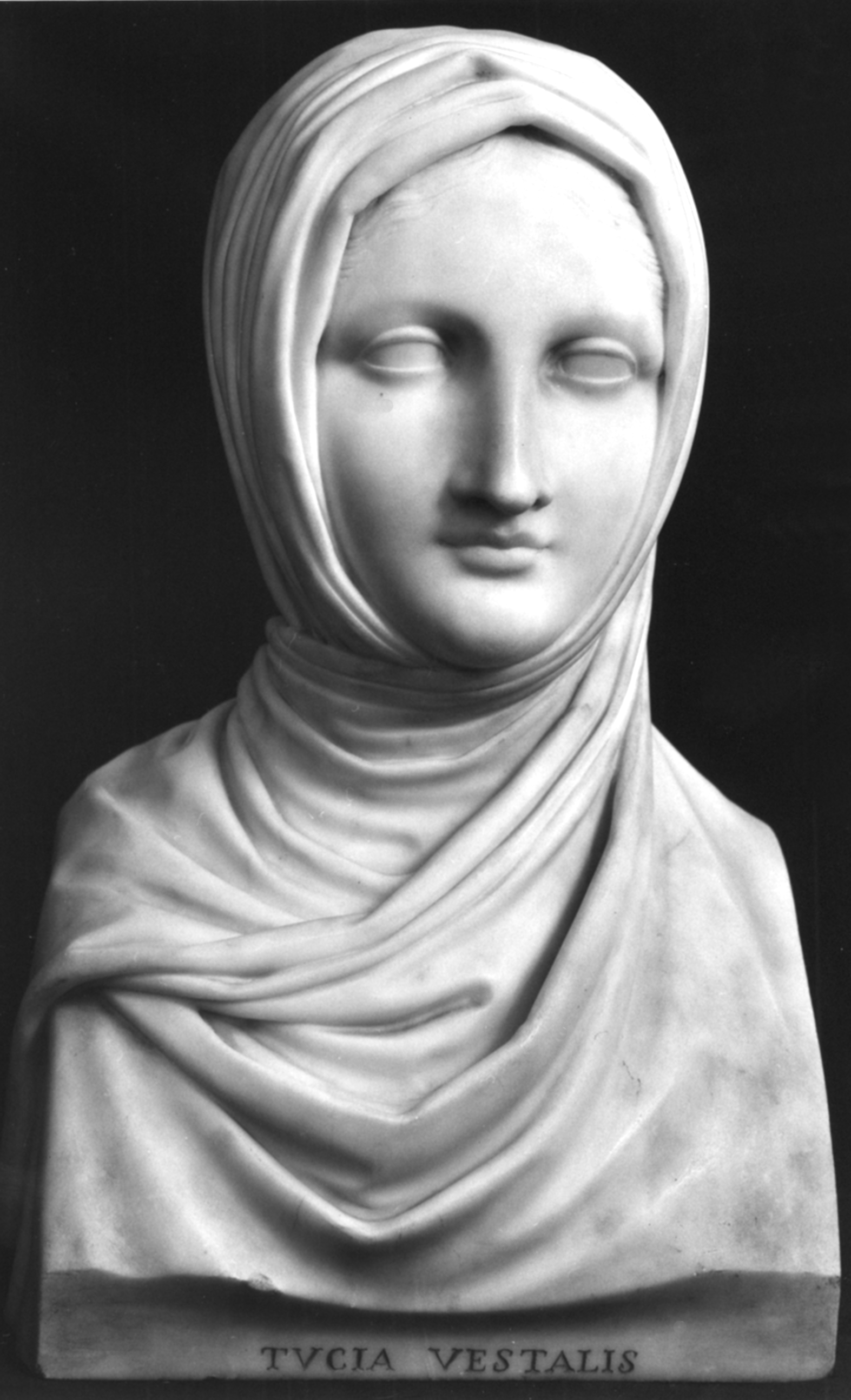
- Rome, 1818
- White marble
- Inv. 2214
Herm of the Vestal Tuccia
Both the subject and the form of this sculpture mark it as belonging to the neoclassical tradition, of which Canova was the first exponent within the medium. Its hermaic form was derived from Antiquity. Herms were male heads on marble plinths which were used as milestones to mark distances along roads. In the 17th century, this form came to be widely used in garden statuary. However, Canova did not just reuse an antique form but also added something new: he replaced the conventional male head with a female one, removed the plinth which functioned as a support, and integrated the head into the base, swathing the whole with a delicately sculpted mantle.
Today we can be sure that this version of the herm of the Vestal Tuccia is an authentic work by the neoclassical sculptor Antonio Canova, thanks to the archives held at Quantock Lodge, Bridgwater, a property that belonged to the great collector of classical art, Edward Arthur Vestey Stanley (Lord Taunton), who owned the Vestal Tuccia. Recent information, divulged by David Worthy, a historical researcher at Quantock Lodge, is enlightening: ‘Sold by him [Canova] to Mr Webb of Langham Place, at whose sale I acquired it’.
It has thus been proved, after heated discussions between experts in Canova’s work, that this is indeed the version produced for Frederick Webb in 1818, the first of a series of three that are currently known to exist.
Frederick Webb Collection, London, 1818. Edward Arthur Vestey Stanley (Lord Taunton) Collection, Quantock Lodge, Bridgwater, at least since 1857. Acquired by Calouste Gulbenkian, through Duveen, at the sale of the Lord Taunton Heirlooms, Sotheby’s, London, 16 July 1920 (lot 3).
H. 50 cm; W. 34 cm; D. 24.8 cm
Cicognara 1823
Leopoldo Cicognara, Biografia di Antonio Canova. Venice, 1823.
Bassi 1957
Elena Bassi, La Gipsoteca di Possagno. Sculture e Dipinti di Antonio Canova. Venice: Neri Pozza, 1957, no. 267, 268, 271.
Hubert 1964
G. Hubert, La Sculpture dans l’Italie Napoléonienne. Paris: E. de Boccard, 1964.
Caramel and Pirovano 1975
G. Caramel and C. Pirovano, Galleria d’Arte Moderna. Opera dell’Ottocento. Milan: 1975, no. 443.
Pivanello 1976
Giuseppe Pivanello, L’Opera Completa del Canova. Milan: Rizzoli editore, 1976, no. 325.
The J. Paul Getty Museum 1986
The J. Paul Getty Museum Journal, vol. 14, 1986, no. 251, p. 263.
Venice 1992
Antonio Canova. Exhibition Held at the Correr Museum, Venice and the Gipsoteca, Possagno, (exhibition catalogue). Venice: March to September 1992, p. 332, no. 150.
Fogelman 1994
Peggy Fogelman, '“S’eri tu in vivo qual ti feo Canova”. Canova’s Herm of a Vestal Virgin', The J. Paul Getty Museum Journal, vol. 22, 1994.
Figueiredo 1999
Maria Rosa Figueiredo, European Sculpture Catalogue, vol. II. Lisbon: Calouste Gulbenkian Museum, 1999, pp. 88–93.
Licht, s. d.
Fred Licht, Canova. Milan: Ulrico Hoepli, s. d.